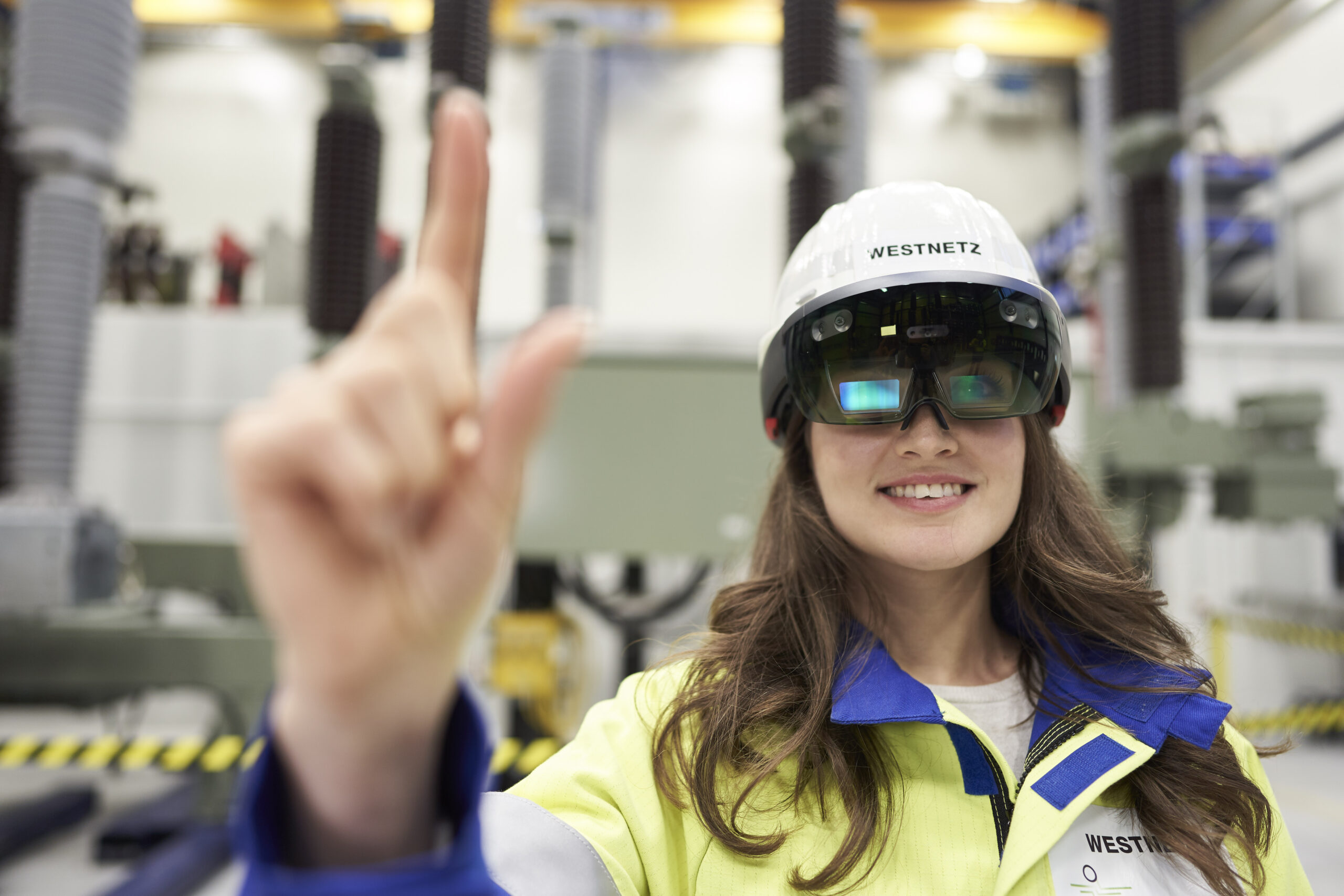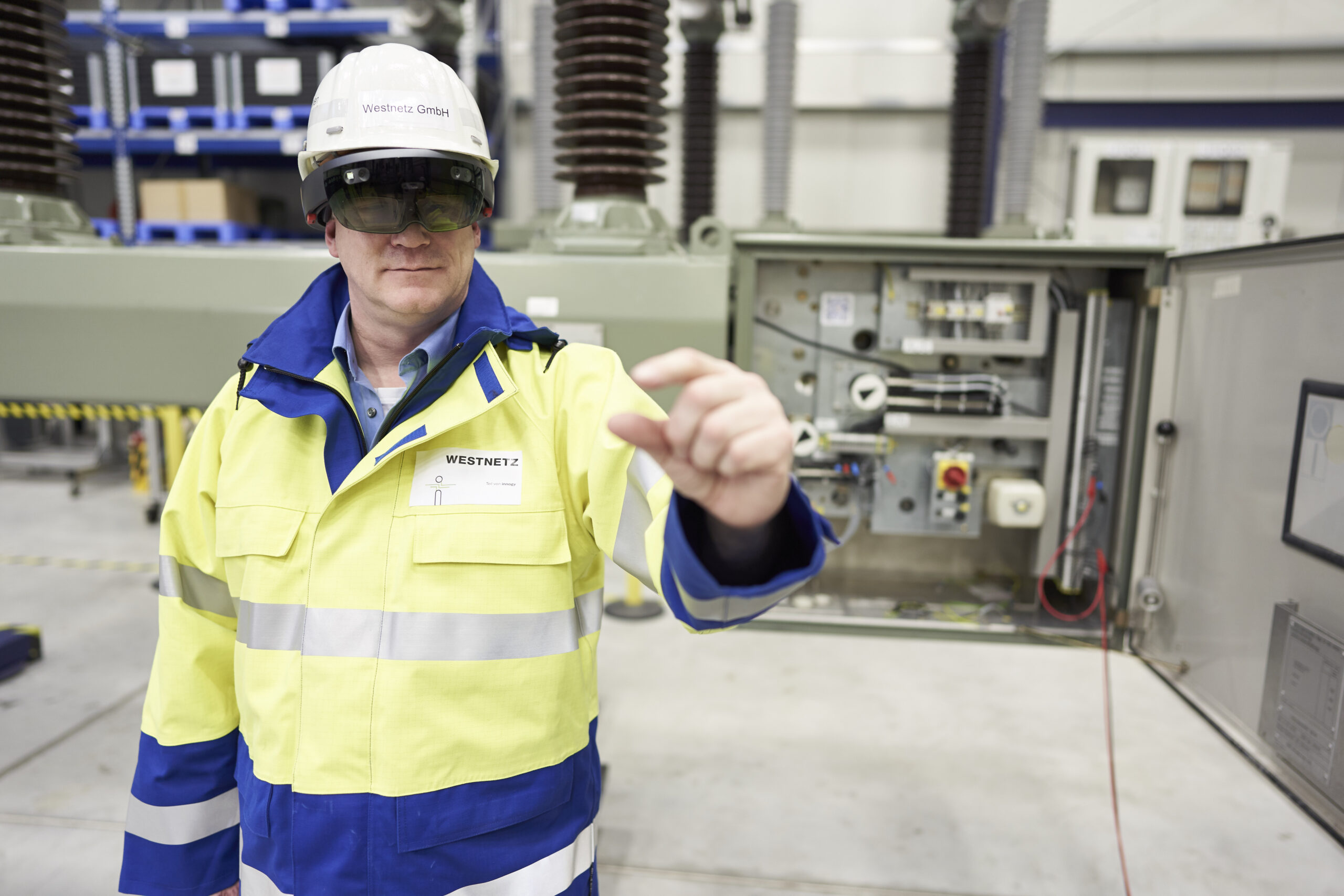The Chances of Digitalization
Distribution system operator Westnetz uses AR training to make complex operating resources easy to understand. The technology provides its users an X-ray view: Transformers, switchgear and lines can be viewed in great detail.
Planning with foresight, making targeted investments and driving forward innovative technology and processes: Westnetz, one of Germany’s largest distribution system operators, is making use of the opportunities offered by digitizing with Augmented Reality.
“Our task is to analyze the market, discover new trends and technologies as well as establish them in other departments,” comments Deliah Hecker from the digitalization, innovation and technology department at Westnetz. Looking at Augmented Reality the development is especially fast-paced. “We have to deal with AR now in order to continue to be innovative in the future,” says Hecker.
“The project with Hololight has shown us how Augmented Reality helps to take workflows and learning processes to a new level of efficiency”.
Deliah Hecker, Digitalization, Innovation and Technology Division, Westnetz

Augmented Reality as a Key Technology
Jens Zurmühlen from the Westnetz Training and Technology Center in Wesel, Germany, also considers Augmented Reality a key technology. He is responsible for the training and further education of primary technology employees. “Our technology center lives on innovations. In a lighthouse project we have shown how Augmented Reality can be integrated into primary technology. AR makes it possible, for example, to conduct realistic trainings and work without having to enter potentially dangerous areas,” says Jens Zurmühlen.
Primary technology includes transformers, switchgear and cables. In other words, multiple complex operating supplies that are designed to run in parallel in order to continue to guarantee a reliable energy supply in the event of failure of individual components. Thorough training for operating and repairing the components is both important and time-consuming.
AR Model Provides New Insights
In order to make the complex equipment easy to understand and to shorten training times, Westnetz uses Augmented Reality software from Hololight and Microsoft’s AR glasses HoloLens. “With the Augmented Reality software, we have an X-ray view deep into the insides of our equipment. Even functionalities that are difficult to display are visible,” reports Jens Zurmühlen. “We can put ourselves in the virtual 3D model and look at every screw and every gear wheel in detail,” adds Deliah Hecker.

The greatest challenge in the lighthouse project was the modelling of the assemblies. It was necessary to realistically represent the dimensional accuracy of the assemblies and also to visualize the moving elements true to the original. The AR application also had to convince the participants of its effectiveness. “Feedback on the new technology was very important to us for the sake of evaluating whether this learning method can be applied seamlessly in the future,” confirms Jens Zurmühlen.
“The project with Hololight has shown us how Augmented Reality raises workflows and learning processes to a new level of efficiency”, summarizes Deliah Hecker. “We also plan to use AR in the future to visualize complex, technical maintenance measures. This will enable us to guarantee safe operation,” concludes Jens Zurmühlen.
